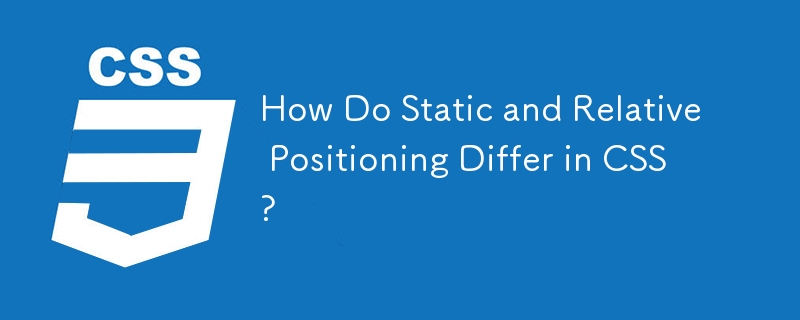Home >Web Front-end >CSS Tutorial >How Do Static and Relative Positioning Differ in CSS?
How Do Static and Relative Positioning Differ in CSS?
- Barbara StreisandOriginal
- 2024-11-08 20:11:02362browse

Static vs. Relative Positioning in CSS
In CSS, understanding the difference between static and relative positioning is crucial for manipulating the layout of elements on a web page.
Static Positioning (Default)
Elements with static positioning behave as expected. They are rendered inline within the parent element according to the HTML flow. They do not respond to positioning rules like left, top, right, or bottom.
Relative Positioning
Relative positioning allows elements to be moved relative to their default position in the HTML flow. By specifying an offset (e.g., left: 50px), the element's position is shifted relative to its default placement. Unlike static positioning, elements with relative positioning still follow the HTML flow.
Impact of Positioning Rules
Relative positioning grants flexibility in positioning elements. However, other positioning types also exist:
- Absolute Positioning: Elements are removed from the HTML flow and positioned precisely relative to the containing element or the next relative-positioned ancestor further up the element tree.
- Fixed Positioning: Elements are removed from the HTML flow and fixed at a specific position within the viewport, regardless of scrolling.
Understanding the Differences
The following summary table highlights the key differences between static and relative positioning:
| Feature | Static | Relative |
|---|---|---|
| Default Behavior | Elements flow inline | Position relative to default |
| Position Rules | Ignored | Respected |
| Removed from HTML Flow | No | No |
The above is the detailed content of How Do Static and Relative Positioning Differ in CSS?. For more information, please follow other related articles on the PHP Chinese website!

